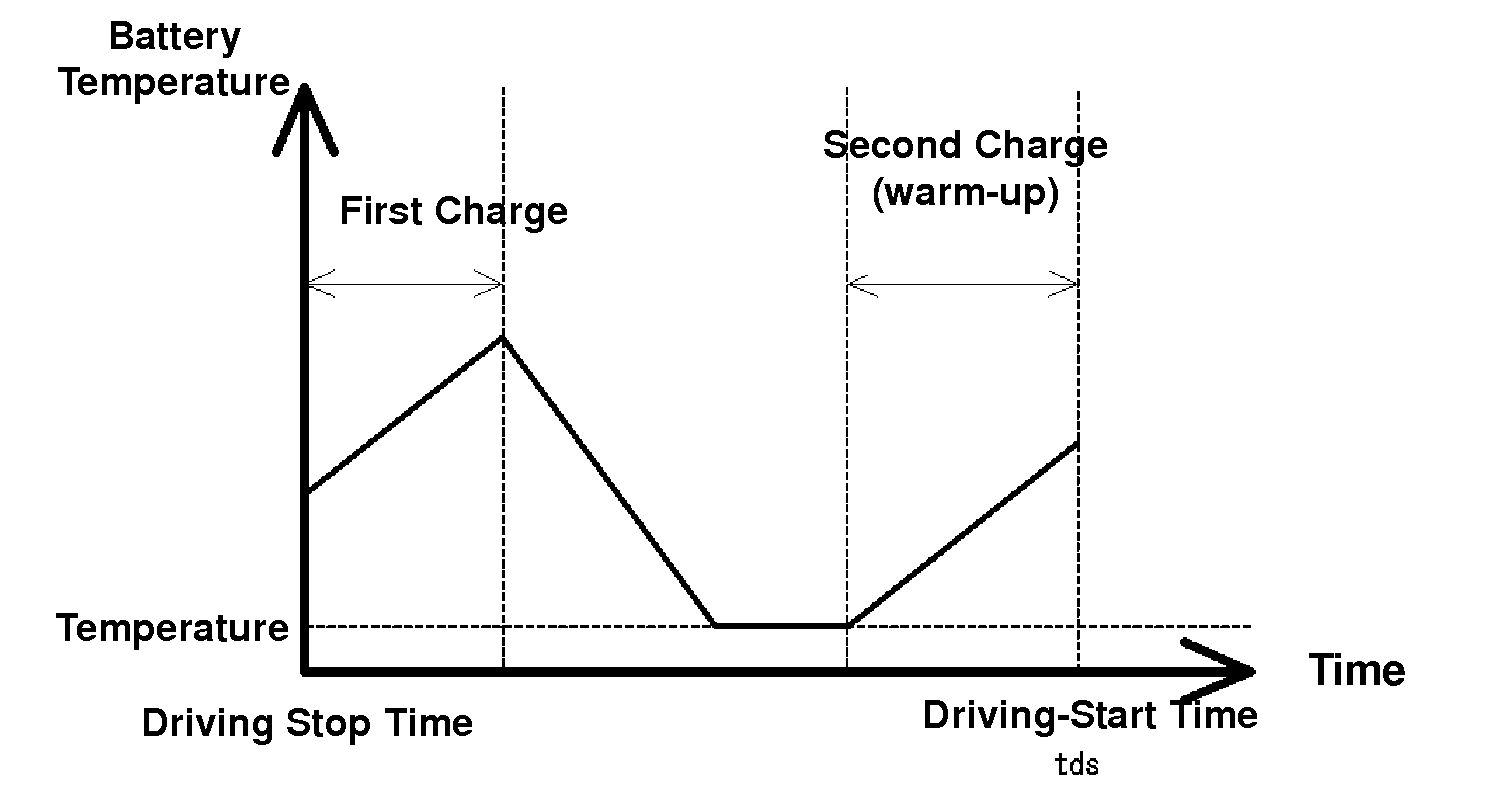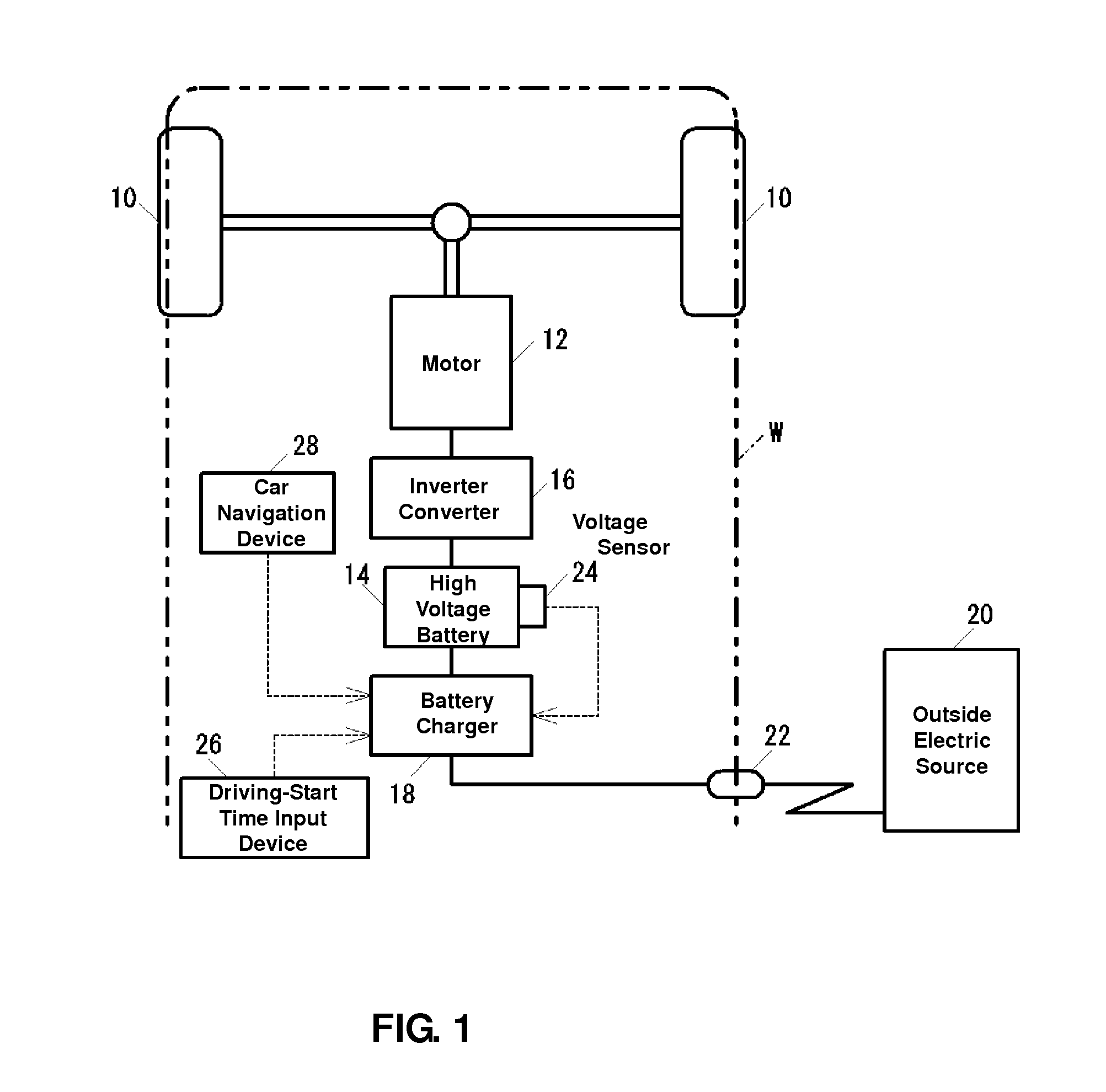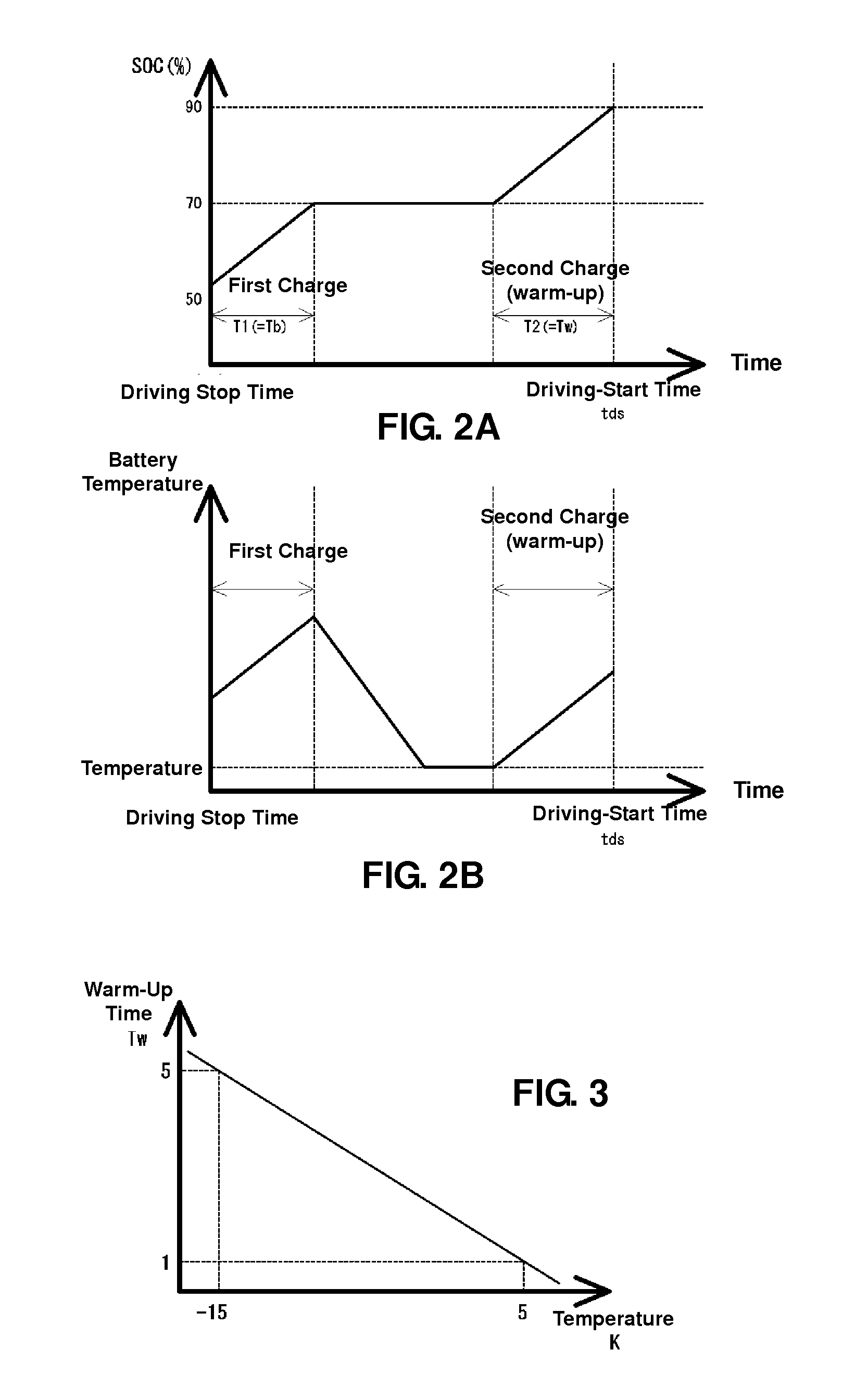Charge method and device of battery for electric motor vehicle
- Summary
- Abstract
- Description
- Claims
- Application Information
AI Technical Summary
Benefits of technology
Problems solved by technology
Method used
Image
Examples
embodiment 1
[0030]FIG. 1 is a diagram schematically showing constitution of an electric motor vehicle W which executes a charge method of a battery for the electric motor vehicle according to a first embodiment of the present invention.
[0031]As shown in FIG. 1, the electric motor vehicle W is a vehicle in which wheels 10 are driven by a motor 12, and installs a high-voltage battery 14 to supply an electric power to the motor 12 therein. The motor 12 is coupled to the battery 14 via an inverter converter 16. The inverter converter 16 supplies the electric power to the motor 12 with conversion of the direct current from the battery 14 to the alternating current, and also supplies the electric power to the battery 14 with conversion of the alternating current which is generated by the motor 12, which functions as a generator during a vehicle deceleration, to the alternating current.
[0032]The battery 14 is charged not only by the motor 12 which functions as the generator but by a battery charger 18...
embodiment 2
[0075]In the above-described first embodiment, the temperature of the battery 14 decreases during the period of time from the completion time of the first charge to the start time of the second charge as shown in FIG. 2B. In some case the battery's temperature may reduce to the outside temperature. Accordingly, there is a concern that in case the driving start is tried unexpectedly during this period, the temperature of the battery 14 is so cold that the prompt driving start may not be achieved.
[0076]In a second embodiment, the battery charger 18 executes the first charge and the second charge, and additionally a third charge between the first and second charges as shown in FIG. 7 to cope with the above-described concern.
[0077]There may be some types of manners regarding the third charge. One of them shows the change of the SOC which is illustrated by a one-dotted broken line in FIG. 7. The third charge functions so as to be continuous to the second charge. Another one shows the cha...
PUM
 Login to View More
Login to View More Abstract
Description
Claims
Application Information
 Login to View More
Login to View More - R&D
- Intellectual Property
- Life Sciences
- Materials
- Tech Scout
- Unparalleled Data Quality
- Higher Quality Content
- 60% Fewer Hallucinations
Browse by: Latest US Patents, China's latest patents, Technical Efficacy Thesaurus, Application Domain, Technology Topic, Popular Technical Reports.
© 2025 PatSnap. All rights reserved.Legal|Privacy policy|Modern Slavery Act Transparency Statement|Sitemap|About US| Contact US: help@patsnap.com



